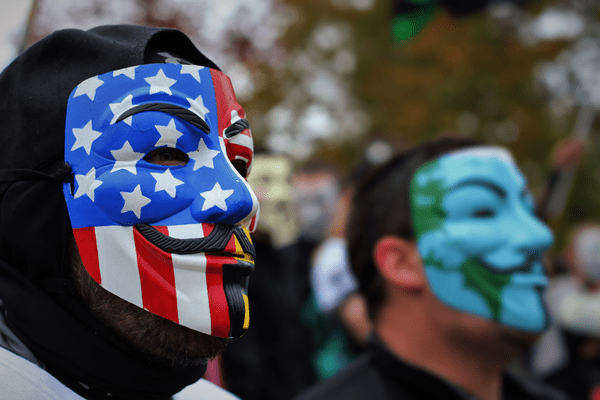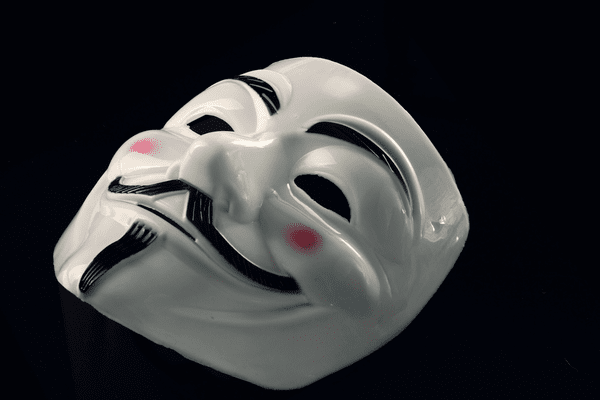
Table of Contents
Every November 5, fireworks light up the skies above England, Scotland, and Wales. Britons go out into the evening to celebrate Guy Fawkes Day.
This autumnal tradition, also known as Fireworks Night or Bonfire Night, has been a prominent feature of the British calendar for the past four decades. You’ll hear children recite the words, ‘Remember, remember / The fifth of November / Gunpowder, treason, and plot,’ around this time. A rhyme that hints at the history of this tradition.
Guy Fawkes, the man, is known for being the highlight of this event. But there must be more to his story than just being the man who was apprehended during the Gunpowder Plot and punished at the Tower of London for the crimes he had committed. Let’s dig deeper into this story and see its relevance in the annual celebration of Guy Fawkes Day.
What is Guy Fawkes Day?

Guy Fawkes Day is a holiday celebrated on November 5th in the United Kingdom. It commemorates the failed Gunpowder Plot of 1605. A group of Roman Catholics led by Guy Fawkes attempted to assassinate King James I and blow up the Houses of Parliament.
The holiday is marked by bonfires, fireworks, and the burning of effigies of Guy Fawkes. It’s a time for people in the UK to come together and remember the events of the Gunpowder Plot, and celebrate the fact that the plot was foiled.
On Guy Fawkes Day, children lurking in the English streets is a common sight, as they carry their handcrafted Guy Fawkes statues, knock door-to-doors, and request for ‘a penny for the guy.’ This tradition somehow became a sort of trick-or-treating in honor of Bonfire Night.
However, amid the celebration of fireworks and bonfires, which takes our attention away from the holiday’s original significance, its history is all too often forgotten.
The Story Behind Guy Fawkes Day: How It All Started

In 1605, a small group of Catholic conspirators attempted to blow up the Houses of Parliament. With the assistance of a radicalized former soldier that went by the name of Guy Fawkes.
The story could be said to begin when the Catholic Pope refused to acknowledge England’s King Henry VIII’s radical views about separation and divorce. Infuriated by this, Henry broke off relations with Rome and installed himself as head of the English Protestant Church.
During the long and brilliant reign of Henry’s daughter, Queen Elizabeth I, Protestant power in England was upheld and reinforced. When Elizabeth died childless in 1603, her cousin, James VI of Scotland, then began to reign as King James I of England.
James VI of Scotland
James wasn’t able to fully establish his kingship with a good impression. He began to enrage Catholics, not long after the start of his rule. They didn’t seem impressed by his inability to enact policies promoting religious tolerance. This negative response worsened when King James ordered all Catholic priests to leave the nation.
These events then urged Robert Catesby to lead a group of Roman Catholic aristocrats and gentlemen in a plot to essentially overthrow Protestant power with the greatest conspiracy ever to be known in history. Everyone in the Houses of Parliament, including the king, queen, and other nobles, was intended to be assassinated using 36 barrels of gunpowder that were carefully stored in cellars located below the Palace of Westminster.
Unfortunately for the conspirators, the warning letter sent to Catholic Lord Monteagle was delivered to Robert Cecil, James I’s Chief Minister. Because of this, the Gunpowder Plot was uncovered. According to some historians, Cecil was aware of the conspiracy. For some time and permitted it to get worse to both assure that everyone involved would be arrested and incite anti-Catholic sentiment across the nation.
Guy Fawkes’s Part in the Gunpowder Plot

Guy Fawkes was born in Yorkshire, England in 1570. He was a soldier who had converted to Catholicism. He had fought for several years in Italy, where he probably got the name Guido, the Italian word for a guy.
His father was a famous Protestant, while his mother’s family members were ‘secret Catholics.’ Being a Catholic back then was extremely risky. Since a lot of Elizabeth I’s rebellions were organized by Catholics, people of the same religion could easily be accused and punished with torture and death.
Being Catholics, Fawkes and his accomplices envisioned that their terrorist attack in 1605 would lead to a Catholic uprising in Protestant England.
While Guy Fawkes became the symbol of Bonfire Night, Robert Catesby was the brain behind the plot. However, Fawkes was an expert in explosives. He also happened to be the one who was discovered near the stockpile of gunpowder under the Houses of Parliament, earning him popularity related to the Gunpowder Plot.
Guy Fawkes revealed the identities of his accomplices under torture. While attempting to flee, Catesby and three other people were killed by soldiers. The others were held captive in the Tower of London before being indicted for high treason and put to death. They were hanged, drawn, and quartered; the archaic British manner of punishment.
The Relevance of Celebrating Guy Fawkes Day

In recognition of the fact that a lot of lives, especially the king’s, were saved on Guy Fawkes’s Day, an act was issued the next year, declaring November 5 to be a day of thanksgiving.
It was ultimately decided to make bonfires and fireworks the centerpieces of the ceremony since they seemed suitable for the celebration, also formally called Gunpowder Treason Day. However, the usual celebration of this tradition was affected by some events.
No one was permitted to ignite bonfires or set off fireworks during World War I or World War II.
This was a section of the 1914 Defense of the Realm Act, a piece of legislation passed by parliament to keep the enemy from knowing where civilians were throughout the war.
As it was against the law in Britain to not celebrate Guy Fawkes Day until 1959, people continued the traditional celebration indoors.
How Guy Fawkes’ Day Is Celebrated

Guy Fawkes’s Day is a public holiday in some parts of the country and is marked by a number of traditions and celebrations.
One of the most well-known traditions of Guy Fawkes Day is the lighting of bonfires. Many people in the UK gather around bonfires on the evening of November 5th to warm themselves and to watch the flames. Some people also throw the effigies of Guy Fawkes onto the bonfires as a symbol of the foiling of the Gunpowder Plot.
Another tradition of Guy Fawkes Day is the setting off of fireworks. Many people in the UK attend organized fireworks displays on the evening of November 5th or set off their own fireworks at home.
Other traditions of Guy Fawkes Day include the making and flying of guy dolls (effigies of Guy Fawkes. They are made out of old clothes and stuffed with newspaper), and the eating of baked potatoes and other hearty foods. In some parts of the UK, it’s also traditional to drink alcohol on Guy Fawkes Day. Many pubs and bars hold special events to mark the holiday.
In England, Wales, and Scotland, toffee apples are regarded as traditional Bonfire Night sweets. Parkin, a type of traditional ginger cake popular in Yorkshire is also usually served on the day. Eating black peas, or peas cooked in vinegar, is another popular custom in Lancashire. Frying sausages on the bonfire were also served with ‘bangers and mash,’ a classic English dish.
The Iconic Guy Fawkes Mask in Modern Times

The graphic novel and movie V for Vendetta by illustrator David Lloyd. Featuring the iconic version of the Guy Fawkes mask. Presented in a dystopian future United Kingdom, the story focuses on a vigilante’s attempts to overthrow an authoritarian government.
Despite not expecting massive feedback on his work, Lloyd shared that the iconic mask could be a powerful symbol of opposition against tyranny. Proving this idea, the Guy Fawkes mask has developed over the past few years into a universal representation of public dissent. It’s been worn by anonymous computer hackers to Turkish airline employees as a sign of protest.
This mask somehow suggests the idea that no matter who you are. You can join forces with others, put this mask on, and accomplish your goals.
Guy Fawkes’s Day FAQs
Guy Fawkes was put to death by being hanged, drawn, and quartered. This was a common punishment for treason in England during the 16th and 17th centuries.
It’s not certain what Guy Fawkes’ last words were, as different accounts of his execution exist. However, it is commonly reported that his last words were “I am a Catholic, and I pray for the forgiveness of my sins.”
It’s not known if there are any descendants of Guy Fawkes. Fawkes was married, but it’s not clear if he had any children.
Guy Fawkes was about 36 years old when he died. He was born on April 13, 1570, and was executed on January 31, 1606.
Guy Fawkes and the other conspirators in the Gunpowder Plot did not have a specific person in mind to replace King James I on the throne. Their goal was to kill the King and his government in an attempt to restore the Catholic faith to England. They did not have a specific plan for who would rule in place of the King after the assassination.
There is no evidence to suggest that the Catholics involved in the Gunpowder Plot were set up by anyone. The plot was a genuine attempt by a group of Catholics to assassinate King James I and overthrow the government to restore the Catholic faith to England.
Wrapping Up
Guy Fawkes Day is considered a unique nationalistic celebration, rooted in the Protestant-Catholic conflict. However, as time goes by, it is slowly losing its religious connotations. It’s now more like a magnificent, secular holiday to cheer people up. Nonetheless, this event greatly commemorates an important piece of the United Kingdom’s history.








